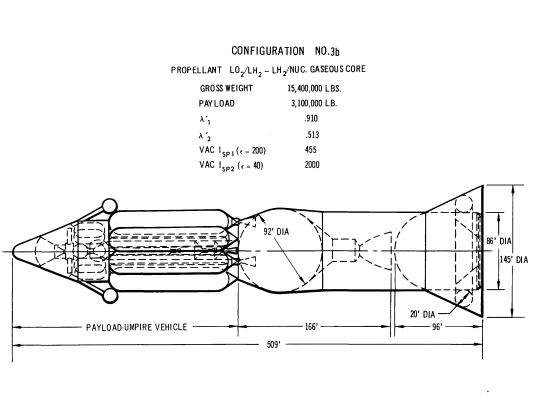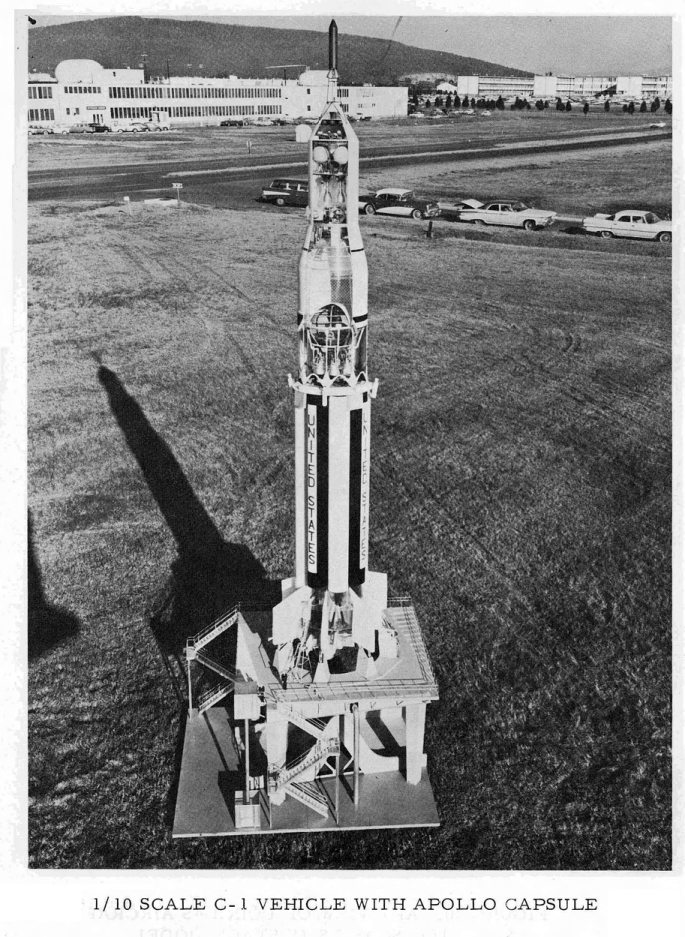The best known approach to using detonations as a form of space propulsion is the Orion, which uses nuclear bombs to provide a “kick in the pants” to a spacecraft. But over the years the use of conventional chemical explosives to drive a ship has also been proposed. Early on, in the era before Tsiolkovsky and Goddard, the use of gunpowder and dynamite bombs seemed to make a measure of sense. But after the 1920’s or so, solid and liquid fuel rockets proved themselves far superior to such crude explosive system. The specific impulse of even a mundane rocket typically well exceeds the Isp of an explosive system, with far less danger, complexity, weight and cost. Still, the idea continued to be of interest. Recently, “pulse detonation engines” have proven of substantial interest. These use conventional liquid propellants, but do not burn them in a continuous fashion… instead the propellants are mixed and then detonated. In this case, the explosive system provides *higher* specific impulses than the equivalently-fueled rockets.
But the use of dedicated high explosives for propulsion may still be of interest. Blog reader Michael Holt recently provided a link to a NASA document that discusses the concept and provides data tables on a wide range of proposed explosives. As expected, the Isp’s available are generally fairly unimpressive; note also that these are the theoretical maximums, with percentage losses certain.
One of the more impressive explosives listed is 1,3-diamino-2,4,6-trinitrobenzene (DATNB, C6H5N5O6). Density is a good 1.65 grams per cubic centimeter, and theoretical Isp is 501 seconds… well in excess of conventional hydrogen/oxygen.


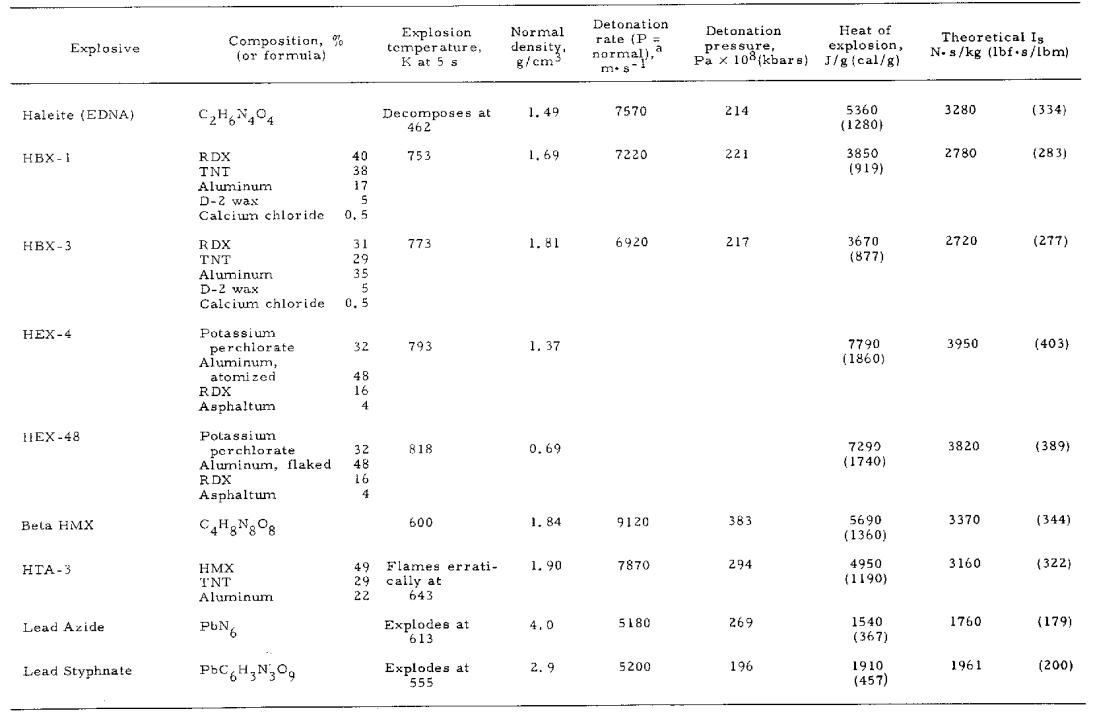
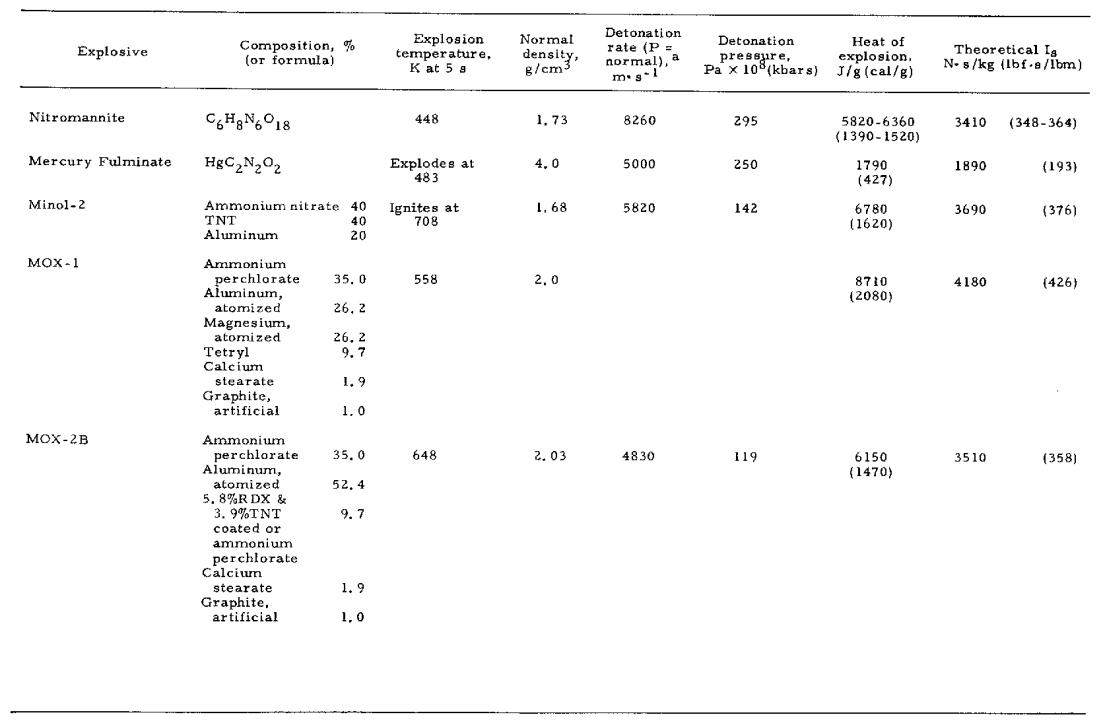
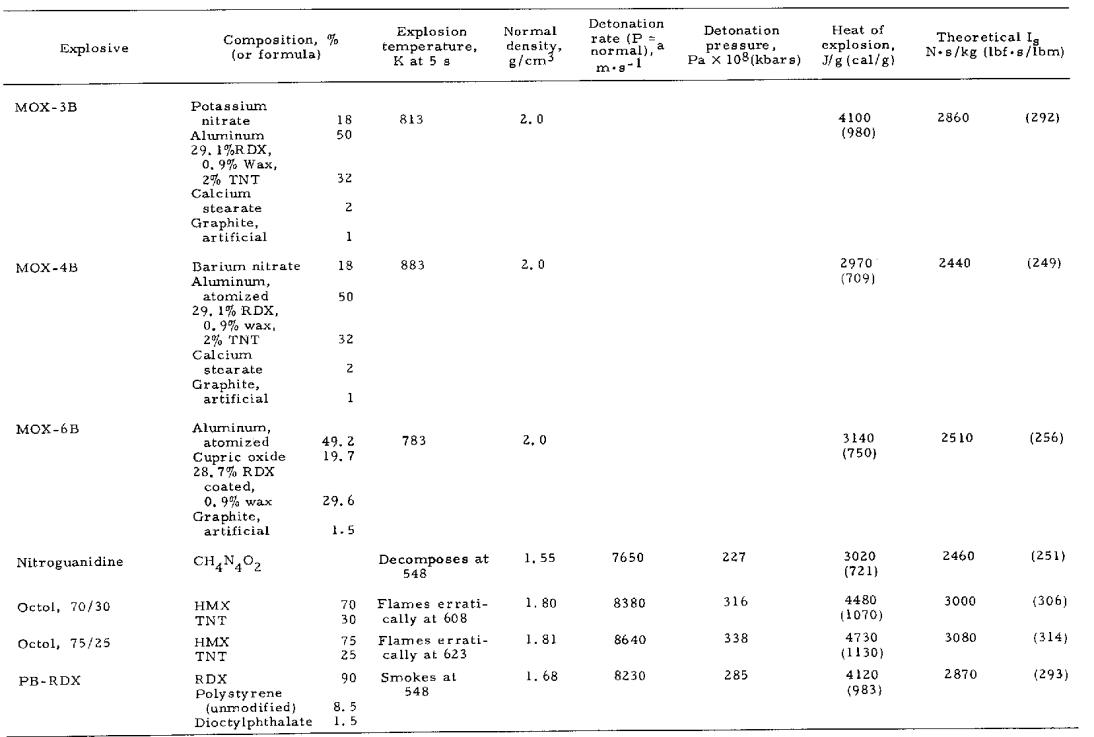
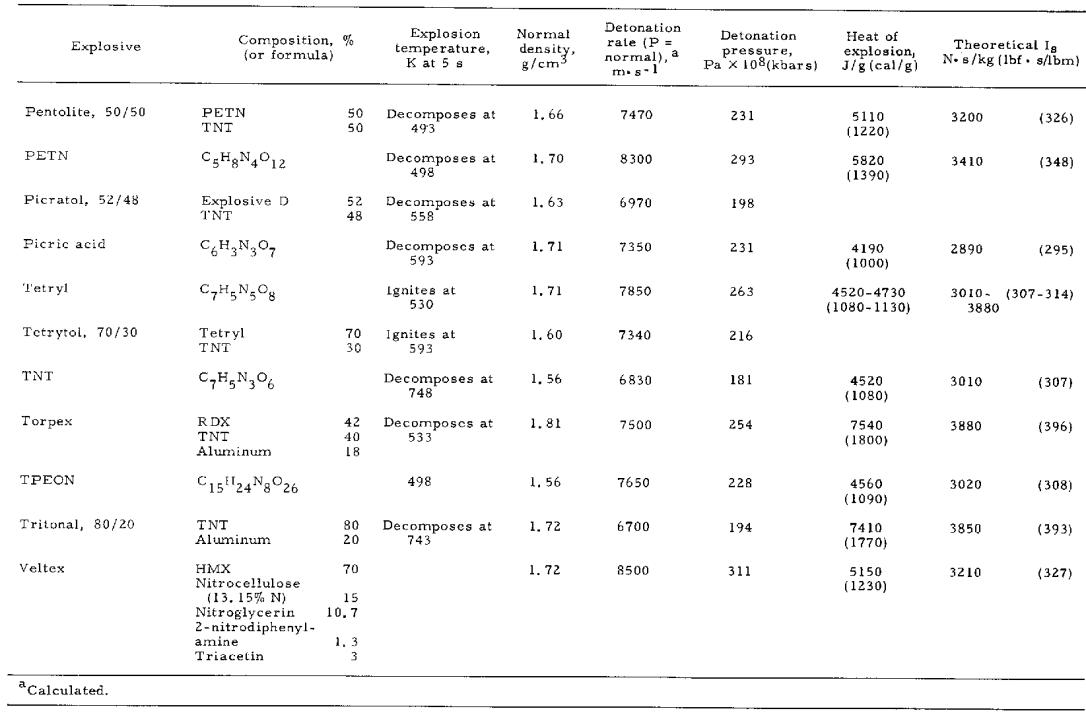
Explosives as propellant offer a few advantages, but a lot of disadvantages. The three most important disadvatages:
1) The propulsion system must be considerably heavier and more complex than an equivalent rocket
2) The risk of the whole ship being blasted into vapor
3) Cost.
In my view, #3 is the killer. I don;t know how much it would cost to buy, say, one hundred tons of 1,3-diamino-2,4,6-trinitrobenzene… but I can’t imagine it’d be cheap. Even with the cost of petroleum far higher than it used to be, kerosene is still less than a dollar a pound. Explosives will always have a hard time competing with that.



